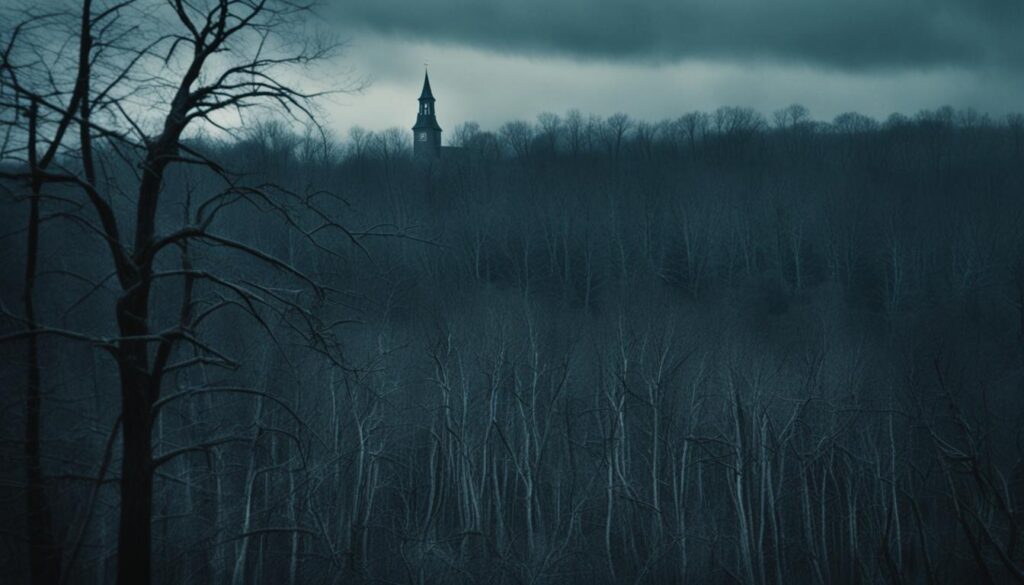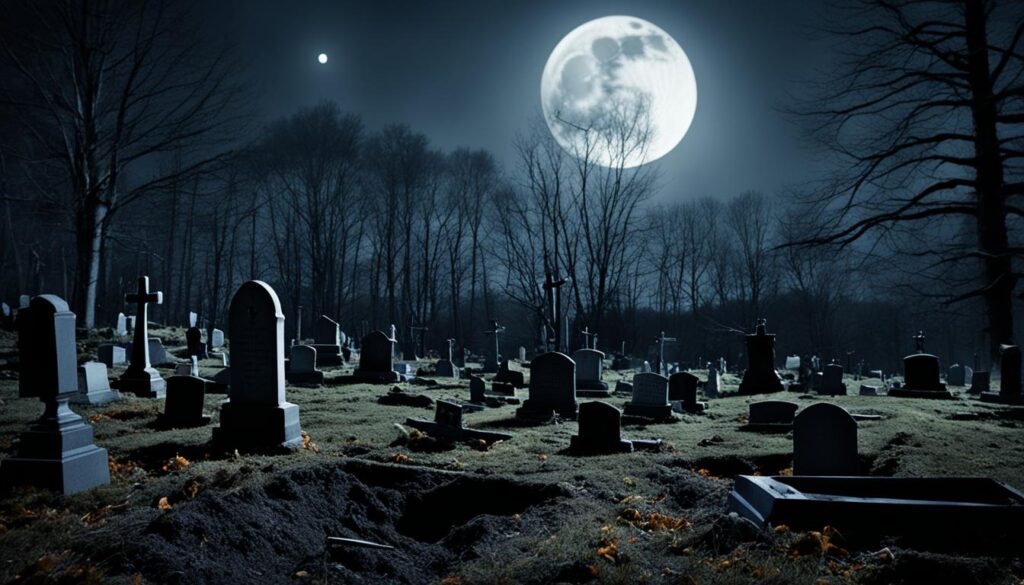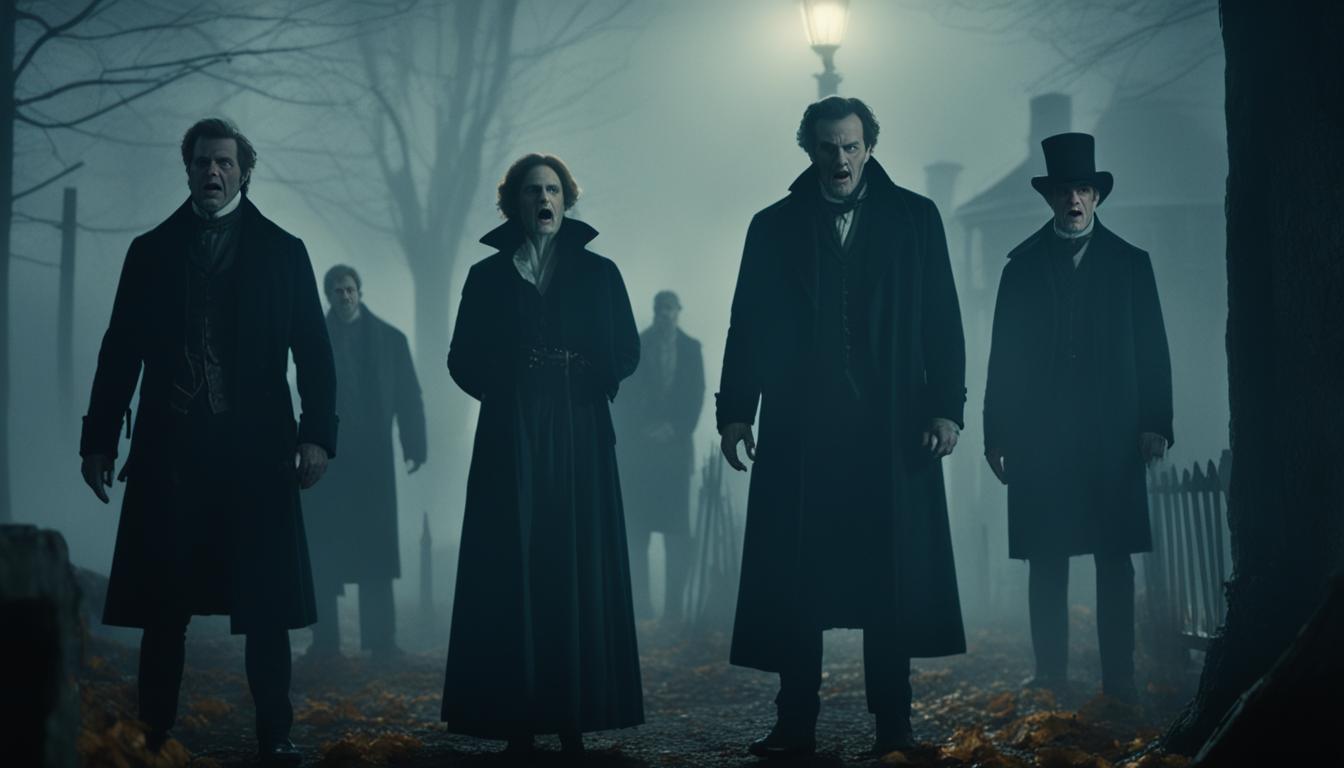Here’s a chilling Rhode Island tale of 19th century New England vampires and tuberculosis outbreaks. Back then, with limited medical knowledge, fear and superstition led to strange practices.
Folklorist Michael Bell found about 80 vampire exhumations from the late 1700s to the 1800s, mostly in rural New England. These dark rituals often happened during tuberculosis outbreaks. Families blamed early victims for attacking the living, causing panic across the region.
In Griswold, Connecticut, a colonial-era farm cemetery had 29 burials from the 1700s and early 1800s. One was J.B., a male skeleton from the 1830s, sent to Washington, D.C. for study. Tests showed he had tuberculosis, linking him to the vampire panic.
Exhumation practices varied in New England. Some burned suspected vampires’ hearts, while others turned corpses facedown in their graves. In Vermont, these rituals became a town event, with heart-burning ceremonies on the town green. As the 19th century went on, fictional vampires in books replaced old beliefs. Medical advances ended the New England vampire panic.
The Rise of Vampire Superstitions in 19th Century New England

In the 19th century, New England saw vampire stories grow during a time of many tuberculosis cases. This disease was deadly, causing about 25% of deaths in the Eastern U.S. Its symptoms, like losing weight and coughing up blood, made people think of vampires draining life.
These superstitions led to strange actions. In 1892, Mercy Brown’s body was dug up in Rhode Island because people thought she was a vampire. Also, in 1793, Rachel Harris’s body was exhumed in Vermont, and her organs were burned to stop tuberculosis from spreading. These events drew big crowds, with Harris’s getting about 500 people to watch.
Doctors didn’t fully understand tuberculosis back then, which helped keep vampire myths alive. Despite knowing it was caused by bacteria, the fear of a disease with no cure led to 86 vampire autopsies in the U.S. since 1784. The last time someone was exhumed in Pennsylvania in 1949 marked the end of this era of fear and wrong beliefs.
New England Experienced Vampire Panics in the 1800s
In the 19th century, New England faced many vampire panics. These scares started when someone died of tuberculosis, causing widespread fear. People believed the dead could spread the disease.
New England folklore added to these fears. In rural areas, like Rhode Island, vampire stories were common. When many got sick, they thought the dead were coming back to harm them. This led to extreme actions, such as exhuming vampires.

In 1892, a famous case happened in Exeter, Rhode Island. Mercy Brown died of tuberculosis. Her body was dug up and her heart burned to try to save her brother. This was a common practice back then.
These vampire panics show how superstitions affected public health in the 1800s. With no cure for tuberculosis until the 1940s, people turned to myths. The New England vampire panic reminds us how fear and myths can grow in times of crisis.
Legacy and Impact of New England’s Vampire Panic
The 1800s saw a unique time in New England history, blending vampire stories with medical progress. Tuberculosis was a major killer, leading people to believe in vampires. This fear was so strong it changed American culture.
Rhode Island was known as “The Vampire Capital of America” from 1870 to 1900. During this time, over 80 cases of “vampire killings” were reported. People gathered in large numbers to witness exhumations, showing how widespread the belief was.
The case of Mercy Brown in 1892 is a famous example of this fear. Her body was found well-preserved, adding to the superstitions. This event drew even more attention to the vampire panic.
The vampire panic’s influence reached beyond New England. It shaped literature and helped evolve vampire stories. Museums like the Mütter Museum now have exhibits on this era, keeping its memory alive. It shows how fear and desperation can lead to supernatural beliefs, even as science advances.
By the early 1900s, the vampire panic began to fade as medical knowledge grew. Robert Koch discovered the cause of tuberculosis in 1882, but it took time for this news to reach rural areas. This period highlights the complex mix of folk beliefs and scientific progress in dealing with deadly diseases.

Leave a Reply